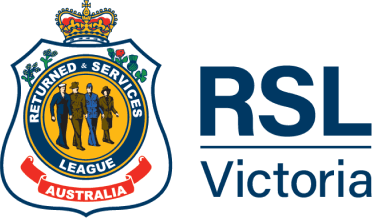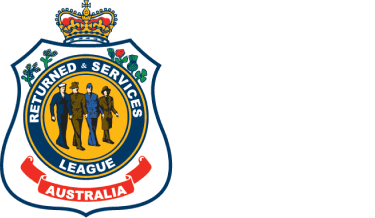Photography: Defence images
There are very few people around today who will remember Australia 100 years ago, when the country marked several milestones that shaped the life we enjoy now. 1921 saw the first woman elected to an Australian parliament, federal legislation established Australia’s permanent national military forces, and the aviation industry was quite literally taking off, with the first circumnavigation of Australia by air completed, followed days later by the opening of Essendon Airport in Melbourne.
It also saw the formation of the Australian Air Force (AAF), later known as the Royal Australian Airforce (RAAF).
On the 31st March 1921, the Australian Air Force (AAF) was established. The moment was announced in the Australian Government Gazette and sits in the archives to this day. “I, Henry William, Baron Forster, the Governor-General aforesaid, acting with the advice of the Federal Executive Council, do hereby order that a Force, to be called the Australian Air Force, be constituted as part of the Australian Military Forces as front the thirty-first day of March, One thousand nine hundred and twenty-one.”
The RAAF’s origins date back to World War One, when Australia’s four Australian Flying Corps (AFC) squadrons were part of the Australian Imperial Force (AIF) and attached to the larger British Royal Flying Corps or Royal Air Force formations.
In 1920, the AFC aircraft and personnel were formed into the Australian Air Corps. The temporary Army unit was then disbanded and paved the way for the creation of the AAF, which immediately took possession of existing aircraft and equipment at Point Cook, Victoria.
During WW1, 800 officers and 2840 airmen served in the AFC. Of these, 175 made the ultimate sacrifice in giving their lives for their country. Many AFC veterans helped to lay the foundations for the RAAF.
The ‘Royal’ prefix was added on the 13th August 1921, following approval from King George V.
The years that followed saw many firsts, including the RAAF air show, which was held at the Flemington Racecourse on 13 December 1924 for a paying crowd of 7000 people. It also saw the establishment of a numerous RAAF Bases, the formation of the Air Force Nursing Service, as well as the Women’s Auxiliary Australian Air Force in 1941.
Despite the progress for women, equality was still decades away. As a school girl, now Retired Wing Commander Robyn Clay-Williams fell in love with flying. She began her Air Force career studying Electronic Engineering in 1979 because flying was not open to women in the Air Force until 1987.

Accepted into the first pilot’s course to admit women, Wing Commander Clay-Williams graduated at the top of the class. She went on to become a flying instructor and a test pilot, helping to shape the RAAF’s personnel and aircraft to create the modern force it is.
But still, she could not fulfill her ambitions of becoming a fast jet pilot because it was only in 1993 that women were able to be admitted into fast jet training.
“A favourite moment of my Air Force career was having the Hon. Ros Kelly, MP, who was only the second woman in the House of Representatives to hold ministerial office, pin my Wings at graduation from pilots’ course.
“That’s closely followed by the 1993 decision to remove all barriers against women flying combat roles,” she said.
From its modest beginnings in 1921, the RAAF has come a long way with its history of contributions across the full spectrum of conflict. From World War Two, when the RAAF contributed over 215-thousand men and women, to the Korean War to the Vietnam War, the RAAF has also been critical in regional security, peacekeeping, research and development and humanitarian assistance and disaster relief.
Among the many achievements the RAAF is proud of, some highlights include its efforts in Cyclone Tracy in 1974, to more recent historical events like the Bali bombings and the Indonesian tsunami in 2004, which saw the RAAF’s participation in the relief effort Operation Sumatra Assist.
It is hard not to make mention of the RAAF’s significant involvement in the recent devastating bushfires in Victoria and New South Wales and now, its ongoing support towards Australia’s response to COVID-19.
Proud Indigenous Australian, Corporal Brodie McIntyre is a Military Working Dog Handler with the RAAF Base Darwin, where he works to protect the Air Force’s Darwin based assets. “To me, being in the Air Force means being dedicated to the nation, my family and, with or without Kesha [his dog], being prepared to assist in peacetime or warlike operations.”

Corporal McIntyre, who is a descendant of the Warlpiri people of the Northern Territory, is the second member of his family to serve in the ADF, following his grandfather, who is an Army veteran.
His heritage is integral in his service life. “I feel I have had an extremely blessed career with the opportunity to participate on numerous occasions with pre-recruitment indigenous programs, had the honour to play the didgeridoo at Gallipoli twice, at the Australian War Memorial on ANZAC Day, and at the Royal Edinburgh Tattoo.”
He was honoured to have been asked to display one of his digeridoos in the Australian War Memorial and then generously donated it to their collection.
Much like all dog handlers and their dogs, Brodie and his Belgian Malinois, Kesha, have a unique bond. The two have served together since 2015. “Kesha is a courageous and smart dog and I have been awestruck to be paired with her and to this point in my career she is the only dog I have had,” said Corporal McIntyre.
In his down-time, Corporal McIntyre, who hails from Cairns, is passionate about researching ancient Aboriginal and Torres Strait Islander tools, materials, hunting and farming methods.
One day, he would like to work closely with the Defence Indigenous Affairs. “I have had to experience and adapt to a different lifestyle while educating others about my background and the cultural worlds I live in,” said Corporal McIntyre.
Unbeknown to many of us as we go about our daily business, globally, on any day, the Air Force may have between 500 and 700 people deployed on active duties. The RAAF is always ready to serve the country, working closely with Navy, Army and other government agencies to deliver air power and support around the world, wherever it is needed in whatever capacity it is required.
As Australia reflects on 100 years of the RAAF’s enduring and evolving contribution, a national series of events will be held to honour the sacrifices and service of the century, and highlight the spectrum of this world class Air Force, for which we are reliant in times of conflict and peace.

